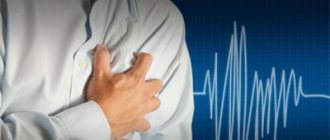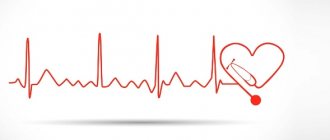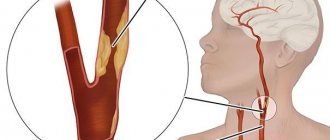What is blood pressure
Photo pixabay.com
There are four types of blood pressure:
- intracardiac;
- capillary;
- venous;
- arterial
And each of them has its own indicators. Most often, “blood pressure” is understood as arterial pressure.
Your heart is a muscle that pumps blood from its left side into the arteries that carry oxygen and nutrients to the organs and tissues of the body. So blood pressure is a measurement of the pressure that blood exerts on the walls of these same arteries.
Blood pressure reaches its maximum when the heart muscle contracts and pumps blood. This phase of the cardiac cycle is called systole. And systolic is the upper pressure.
Then the heart relaxes and fills with blood. This phase is called diastole, and during it diastolic (lower) pressure is measured. After the pressure measurement is completed, we receive two numbers, for example 120/80 mmHg. Art. (millimeters of mercury).
In this example, 120 represents the upper (systolic) pressure, and 80 represents the lower (diastolic) pressure.
What is normal blood pressure
Photo pixabay.com
The optimal blood pressure level is below 120/80 mm Hg. Art. Readings over 120/80 mmHg. Art. and up to 139/89 mm Hg. Art. range from normal to high.
But it is important to note that these figures are quite conditional. The fact is that the “norm” varies from person to person and depends on many factors, including:
- age;
- floor;
- weight;
- individual characteristics of the body.
So, when we talk about the normal pressure for men of the same age (and even approximately the same build), it may differ. Therefore, one of the key parameters when determining your personal norm will be your well-being.
If you always feel good with a blood pressure of 130/80 mmHg. Art., then it is possible that these numbers are not indicators of some kind of malfunction in the functioning of your body.
However, only a doctor can make such a conclusion, therefore, to find out your ideal blood pressure, you must be examined by a doctor.
Bradycardia: causes, symptoms
Bradycardia in simple words is a slowdown in the functioning of the heart muscle. In this condition, the walls of blood vessels experience less beating. The norm in men decreases to 60 beats per minute. The normal pulse of a 40-year-old woman with bradycardia is up to 65. Slow heart function does not always indicate disturbances in the body or pathology of the cardiovascular system. Often you can say that this is normal. A peculiar physiological feature. Some people don't even notice it. However, a low heart rate may indicate problems with cardiac function. Therefore, if signs of bradycardia are detected, you should quickly run to a medical facility for consultation.
Symptoms of a slow heartbeat:
- fast fatiguability;
- general weakness;
- cold hands and feet;
- breathing problems;
- feeling of tightness in the chest;
- recurrent attacks of vision impairment;
- loss of consciousness;
- uneven heartbeat;
- low blood pressure.
Blood pressure: norm by age in men
Although, as we said above, the blood pressure norm for men is individual, there are average values by age - here is a table with these indicators.
| Age | Upper pressure | Lower pressure |
| 20 years | 123 | 76 |
| 30 years | 126 | 79 |
| 40 years | 129 | 81 |
| 50 years | 135 | 83 |
| 60 years | 142 | 85 |
As you can see, with age, normal pressure (both upper and lower) usually increases, but only slightly.
What causes low blood pressure
Photo pixabay.com
Conventionally, hypotension can be divided into two groups. In the first case, a sharp drop in pressure occurs - so-called acute hypotension. She is called by:
- large blood loss;
- complications of diseases;
- dehydration (dehydration);
- disturbances in the functioning of the heart.
To treat this problem, the root cause must be addressed. Another thing is chronic hypotension. It can be caused by many more reasons:
- congenital feature of the body;
- living in high mountains;
- active sports;
- starvation;
- underlying disease (the list is huge - from diabetes to alcoholism);
- side effect of taking medications;
- stress, depression and neuroses.
How is low blood pressure treated?
Most people with low blood pressure do not need treatment. They also have a reduced risk of heart attack, stroke and other life-threatening heart diseases.
- FAQs Be a hero: how to save a person from a heart attack or stroke?
However, low blood pressure can negatively affect the quality of life, causing chronic fatigue, constant headaches and even fainting.
Therefore, if you observe these symptoms, you should definitely consult a doctor. If he can find the cause of your low blood pressure, he will decide on the most appropriate treatment for you.
Factors that can provoke hypertension
If blood pressure has increased, it could be caused by the following factors:
- changes in the body caused by menopause;
- passive lifestyle;
- renal dysfunction;
- diabetes;
- obesity or excess weight;
- brain concussion;
- period of bearing a child;
- alcohol and smoking;
- diseases of the heart and blood vessels;
- medications.
The problem of high blood pressure cannot be solved on your own; you should consult a doctor. The specialist will find out the cause and prescribe treatment, if necessary.
What is high blood pressure
Photo pixabay.com
Blood pressure over 130/80 mm Hg. Art., as a rule, is considered high. When blood pressure is high, the heart and arteries can become overworked. High blood pressure can accelerate the buildup of plaque on artery walls (atherosclerosis), clogging blood flow to the heart muscle and putting you at risk of a heart attack.
It also weakens the walls of arteries in the brain, which can lead to stroke. High blood pressure can also affect arteries in other parts of the body, such as the eyes, kidneys and legs.
Long-term high blood pressure is known as hypertension and is a major risk factor for developing cardiovascular disease.
How to measure your pulse
To determine whether a particular heart rate is normal for middle-aged women, it is necessary to measure it correctly. This can be done by placing the middle and index fingers of the hand on the wrist, elbow, and side of the neck. There is no need to use your thumb. The pulsation of the arteries in it can interfere with correct counting.
You need to look at your watch and count the number of pulse waves in 60 seconds. It is quite acceptable to do the calculation in 20 seconds and multiply it by 3. Let us remind you once again that a woman’s pulse normally ranges from 60 to 100 per minute.
To measure pulse values, many women use:
- Applications for smartphones. Using such a program, you just need to place your fingertip on the gadget’s screen, and after a few seconds it will display your heart rate values.
- Fitness bracelet. Also, women of any age can use fitness bracelets to measure heart rate and blood pressure. These devices stand out from the rest: ease of use, practicality and versatility.
- Stationary devices. Home devices for self-measurement of pulse and blood pressure (preferably automatic, but you can also use semi-automatic devices, when air is pumped into the cuff not by the device, but by the patient himself using a rubber bulb).
What Causes High Blood Pressure
Photo pixabay.com
Blood pressure rises and falls throughout the day. It depends on:
- time of day;
- amount of fluid in the body;
- taking various medications;
- lifestyle;
- physical activity.
Blood pressure can also be affected by your breathing, emotions and sleep. These temporary highs are completely natural, and your blood pressure usually returns to normal when you rest.
The exact cause of persistent high blood pressure (hypertension) is often unclear. However, various lifestyle conditions are known to increase blood pressure. Among these factors:
- overweight;
- lack of physical activity;
- drinking more than two alcoholic drinks per day;
- stress;
- elderly age;
- smoking;
- family history of high blood pressure.
If hypertension is not diagnosed early, it can lead to serious health problems, including coronary heart disease.
Therefore, it is important to regularly monitor your blood pressure readings so that if you notice an increase in your normal values on a regular basis, you can seek medical help in advance and prevent a crisis.
Menstrual cycle from 40 years old: what happens to the body
Menstruation is uterine bleeding, which is a natural state of the female body. Normally, it occurs regularly with a frequency of 21-35 days and a duration of 4-7 days. Bloody discharge appears as a result of rejection of the endometrium of the uterus if fertilization has not occurred. This process is regulated by the female sex hormone estrogen, produced by the ovaries.
Menstruation in women after 40 lasts from 2 to 7 days, their regularity and frequency vary, and there may be no discharge for several months.
Periods tend to change after age 40. It is this time that is marked as the aging of the female body, which is reflected in the onset of menopause. Under the influence of hormonal imbalance, disturbances in the frequency and duration of the cycle and discharge begin.
After 40-45 years, menopause begins, as a result of which the menstrual cycle and the abundance of discharge change.
Features of menopausal changes
You shouldn’t think that the menstrual cycle changes dramatically after 40 years. This process lasts 2-8 years and is characterized by a gradual decrease in estrogen levels. And the period of 40-45 years is very relative. When a woman begins menopausal changes depends on her individual characteristics, the presence of chronic diseases, nutrition, and how many bad habits she has.
Over time, the ovaries begin to produce less and less estrogen, its amount decreases gradually, although the balance is constantly upset, either up or down. The number of follicles with eggs also decreases (their number is laid during the intrauterine development of girls). Therefore, it is difficult to talk about the stability of menstruation. So, they can go on for several months, then stop for a certain period.
How to control high blood pressure
Photo pixabay.com
The good news is that you can control (and even prevent) high blood pressure by making healthy lifestyle choices. To prevent hypertension in the future, you need to do the following today:
Follow a healthy diet
This means reducing your salt and fat intake and including more fruits and vegetables in your diet.
Exercise regularly
At least 150 minutes a week. Don't know where to start? Take our workout for beginners as a basis.
- Fitness Program for the perfect first workout at home (it's time to start) Stop making excuses for yourself!
Maintain a healthy weight
As we said above, obesity is one of the factors that provokes high blood pressure.
Limit alcohol consumption
And not only because of pressure.
Quit smoking
We know it’s difficult, but it’s possible. You can read how to get rid of any bad habit in a separate article.
- FAQs How to get rid of any bad habit once and for all: 5 main rules
Sometimes lifestyle changes alone may not be enough. Many people also need medications to lower their blood pressure. However, under no circumstances should you decide on a course of any pills on your own - all such drugs must be prescribed by a doctor.










